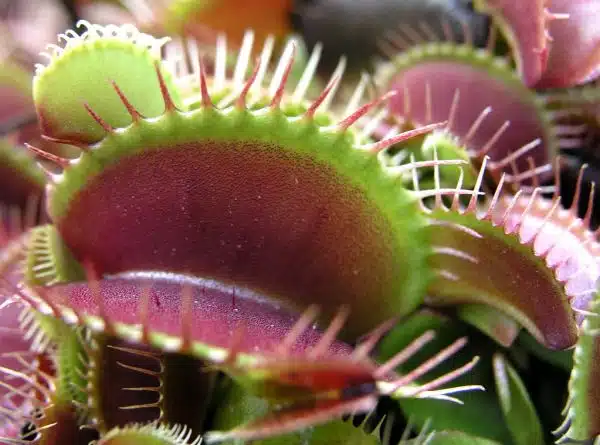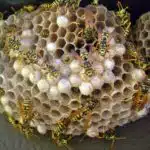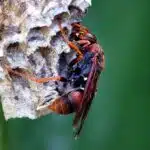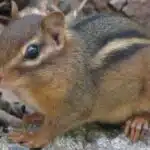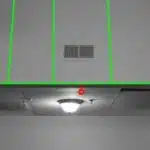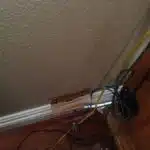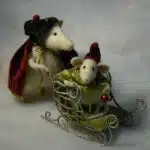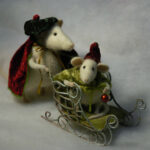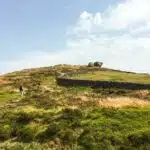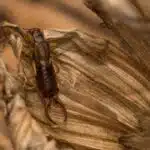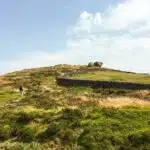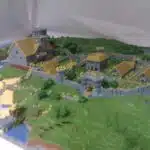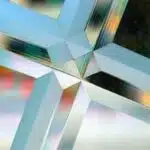Wasps are one of the most common pests in our backyards and gardens, and they can be a nuisance to anyone trying to enjoy the outdoors. While commercial wasp traps may seem like an easy solution, they can be expensive and filled with harmful chemicals. In this DIY project, we will show you how to make a simple and effective wasp trap using just a few household items.
By making your own wasp trap, you can save money while also avoiding the use of harmful chemicals that could harm not only the wasps but other beneficial insects as well. This project is perfect for anyone looking for an eco-friendly and cost-effective solution to their wasp problem. So grab your supplies and let’s get started on creating a safe and effective way to keep those pesky wasps at bay!
Understanding The Importance Of Wasp Control
Importance of Wasp Control
When it comes to controlling wasps, it is crucial to understand the importance of this task. Wasps can pose a significant risk to people and pets in the surrounding areas. They are known for their painful stings, which can cause severe allergic reactions and even death in some cases. Moreover, wasps are also notorious for their aggressive behavior, making them more dangerous than bees.
Understanding the risks associated with wasps is critical to maintaining a safe environment. Children and pets are particularly vulnerable to wasp stings, which can lead to serious health complications if left untreated. Additionally, wasp infestations can quickly get out of hand if not addressed promptly, resulting in costly damage to property.
Despite these risks, there are also benefits to controlling wasps. By doing so, you will be able to enjoy your outdoor activities without the constant threat of being stung. Furthermore, eliminating wasp nests around your home will help protect your property from damage caused by these pests.
Now that we have established the importance of controlling wasps let us move on to identifying the types of wasps in your area.
Identifying The Types Of Wasps In Your Area
Now that we have established the importance of wasp control, let us move on to identifying the types of wasps in your area. This is crucial as different species exhibit varying behavior patterns and may require different types of traps. Some common wasp species include:
- Yellow Jackets: These are aggressive wasps that are attracted to sweet foods and meats. They build nests underground or in wall cavities.
- Paper Wasps: These wasps are less aggressive but can sting multiple times. They build papery nests under eaves or in trees.
- Hornets: These are the largest type of wasp and can be very aggressive when disturbed. They build paper nests in trees or shrubs.
Identifying the species in your area will help you choose the right type of trap and placement for maximum effectiveness. It is also important to note their behavior patterns, such as their feeding habits and nesting locations, which will determine where you should place your trap.
When choosing the location for your DIY wasp trap, it is important to consider a few things. First, make sure that it is placed away from areas where people frequent, such as patios or swimming pools. Second, place it near an area where you have seen wasp activity before or near their nesting spot if possible. Finally, ensure that the trap is placed at a height where it can be easily accessed for maintenance and disposal.
By properly identifying the species of wasps in your area and understanding their behavior patterns, you can effectively control them with a DIY trap in a suitable location. In the next section, we will discuss how to construct your own homemade trap using simple materials found around your home.
Choosing The Right Location For Your Wasp Trap
Finding the best location for your DIY wasp trap is crucial to its success. Choosing the wrong location could result in a trap that doesn’t catch any wasps at all, or even worse, attracts more wasps to your area. To avoid making costly mistakes, you need to consider a few key factors when selecting the optimal spot for your trap.
First and foremost, you want to choose an area where you’ve seen a lot of wasp activity. This could be near your garbage cans or compost bin, for example. Wasps are attracted to sweet smells and sugary substances, so make sure the trap is located in an area that is easily accessible to them but away from human traffic.
Another important consideration is the height of your trap. Wasps are known to fly at different altitudes depending on their species, so it’s essential to place your trap at the appropriate height to catch as many wasps as possible. Generally speaking, hanging your trap at eye level or slightly above should do the trick.
To help you choose the perfect location for your DIY wasp trap, refer to this table:
| Location | Pros | Cons |
|---|---|---|
| Near Garbage Cans | Attracts Wasps | May Attract Other Pests |
| Near Compost Bin | Attracts Wasps | May Smell Bad |
| In Garden | Catches Outdoor Wasps | May Not Catch Indoor Wasps |
| On Patio/Deck | Easy Access for Humans | May Scare People Away |
By considering these factors and using our table as a guide, you can find the perfect location for your DIY wasp trap and start catching those pesky insects in no time!
Now that you know where to place your DIY wasp trap, it’s time to gather all of the necessary supplies.
Gathering Your Supplies
Once you have decided to make a DIY wasp trap, it is important to gather all the necessary supplies before starting. This will ensure that the process goes smoothly and efficiently. The following are some of the items you will need to create a wasp trap:
- A plastic bottle
- Scissors or a knife
- Sweet bait, such as sugar water or fruit juice
- String or wire for hanging the trap
The plastic bottle is an essential component of your DIY wasp trap. It can be any size or shape, but a two-liter soda bottle works well. Scissors or a knife will be needed to cut the bottle into two pieces. Sweet bait is necessary to attract the wasps into the trap. Some alternative options include jam, honey, or even mashed-up fruit.
DIY wasp trap modifications and alternative bait options can also be explored based on personal preference and experience. For example, some people add protein-based baits like meat scraps to their traps to attract yellow jackets instead of using sweet baits for other types of wasps. It’s important to note that certain baits may work better in different regions depending on what types of wasps are common in that area. With these basic supplies and an understanding of potential modifications, you’ll be ready to move onto cutting the bottle in half for assembling your DIY wasp trap.
With all supplies gathered and an understanding of basic modifications and alternative bait options, it’s time to move on to cutting the plastic bottle in half for assembling your DIY wasp trap.
Cutting The Bottle
Now that you have marked the cutting lines on your plastic bottle, it’s time to cut it up. Using a sharp pair of scissors or a utility knife, carefully cut along the designated lines. Be sure to follow the markings as closely as possible to ensure that the trap functions properly. If you’re having trouble getting a clean cut, try using a ruler or straight edge to guide your blade.
Once you’ve successfully cut out the top section of the bottle, it’s time to move onto decorating it. While not necessary for functionality, adding a bit of flair can make your trap more visually appealing. You can use paint or markers to add designs or colors to your trap. Alternatively, if you’d like something more natural-looking, try wrapping twine or thin rope around the outside of your bottle.
If you don’t have a plastic bottle on hand, don’t worry! There are plenty of alternative materials that can be used in place of a plastic bottle. For example, you could use an old glass jar with a screw-on lid instead. Simply drill holes in the lid and proceed with making your trap as normal. The key is to ensure that whatever container you choose has an opening at the top for wasps to enter and exit through.
Preparing The Bait
When it comes to attracting wasps, the bait you use is crucial. Different types of wasp species are attracted to different things, so it’s important to choose a bait that is appropriate for the type of wasp you want to trap. You can use DIY bait recipes or purchase commercial baits from your local home improvement store.
One DIY option for attracting wasps is using a mixture of sugar and water. The sweetness of this mixture mimics the nectar that many wasps feed on. Another option is using meat or fish scraps as bait, which will attract predatory wasps looking for food. It’s important not to use too much protein-based bait, as it could also attract other unwanted pests like ants.
It’s important to note that while these DIY bait recipes are effective, they may not work for every species of wasp in your area. It may take some trial and error to find the perfect combination of ingredients that works best for your specific situation. Once you have prepared your chosen bait recipe, it’s time to move on to the next step: adding the bait to the trap.
Adding The Bait To The Trap
Bait options for your DIY wasp trap are essential to attract wasps. The bait needs to be something that the wasps will find attractive, and then they will enter the trap. There are several options for baiting a wasp trap, including sweet foods like honey, sugar water, or jam. You can also use protein-based baits like raw meat or fish.
Attracting wasps can be challenging because they tend to prefer sweet foods over protein-based ones. Using a combination of both may help increase your chances of success in attracting them. Another option is to use a commercially available attractant that is specifically designed for trapping wasps.
Once you have chosen your bait and added it to the bottom of the bottle, you are ready to move on to attaching the top of the bottle to the bottom. This step is crucial in ensuring that your DIY wasp trap works effectively. By attaching the top securely, you can prevent any escapees and ensure that all trapped wasps meet their fate inside the bottle.
Attaching The Top Of The Bottle To The Bottom
- Gluing is a simple method to attach the top of a bottle to the bottom and can be done with a variety of adhesives such as silicone, epoxy, or hot glue.
- Cutting involves using a sharp knife or a pair of scissors to cut the top of the bottle off, so that it can be reattached to the bottom.
- Drilling holes in the top and bottom of the bottle can be used to attach the two parts of the bottle together with a screw or a bolt.
- Depending on the type of material the bottle is made from, the ideal cutting, drilling, or gluing method should be chosen to ensure a secure connection between the two parts.
- Care should be taken to ensure that any cutting or drilling is done accurately and with the correct tools, as an inaccurate cut or drill could affect the connection between the two parts of the bottle.
- It is important to use the right type of adhesive to ensure that the connection between the two parts is strong and secure.
Gluing
To secure the top of the bottle to the bottom, one must employ effective gluing techniques. There are several types of glue that can be used for this purpose, including epoxy, silicone, and hot glue. Epoxy is a popular choice due to its strength and durability. Silicone is also a reliable option as it is resistant to moisture and heat. For those who prefer a DIY approach, there are various glue recipes available online that utilize natural ingredients such as flour and water.
When using epoxy or silicone glue, it is important to carefully follow the manufacturer’s instructions for best results. These types of glues typically require mixing two parts together before application, so it is essential to measure accurately. Hot glue, on the other hand, can be applied directly from a glue gun onto the surfaces being joined. It sets quickly but may not be as durable as other types of glue.
No matter what type of glue you choose, ensure that both surfaces being joined are clean and dry before applying any adhesive. Any dirt or moisture present may compromise the effectiveness of the bond. With careful preparation and application of an appropriate glue, attaching the top of the bottle to the bottom should be a simple yet crucial step in creating your own effective wasp trap.
Cutting
To make an effective wasp trap, it is crucial to attach the top of the bottle securely to the bottom. After selecting the appropriate glue for your DIY trap variations, it is time to prepare the bottle for attachment using cutting techniques. There are different methods you can use depending on the shape and size of the bottle.
One common cutting technique involves using scissors or a knife to cut around the circumference of the bottle just below where it begins to curve inward. This creates a base for attaching the top half of the bottle later on. Another method involves cutting off the entire top portion of the bottle, leaving only its cylindrical bottom part intact. This allows you to insert bait or liquid into the trap more easily.
When cutting your plastic bottles, ensure that you do so in a clean and safe environment. Sharp objects like knives and scissors should be handled carefully to avoid accidents. Additionally, consider reusing any excess materials from your bottles for other DIY projects or recycling them responsibly.
By employing these cutting techniques, you can create an effective wasp trap that will help keep outdoor spaces free from these pesky insects. With careful preparation and attention to detail in each step of making your DIY trap, you’ll be able to enjoy outdoor activities without worrying about unwanted guests disrupting your fun.
Drilling
To attach the top of the bottle securely to the bottom, drilling is another option you can consider. However, drilling plastic bottles requires some safety precautions, especially if you are using a power drill. Before starting, make sure to wear protective equipment like safety glasses and gloves to avoid any injuries. You should also use a sharp drill bit that can easily penetrate through the plastic without causing it to crack or break.
When drilling your bottle, it’s essential to keep safety in mind. Ensure that your work area is clean and free from any clutter that might cause accidents. Start by marking where you want to drill with a permanent marker or masking tape. Then, place the bottle on a flat surface and hold it firmly in place with one hand while using your other hand to operate the drill carefully.
If you’re new to drilling plastic bottles, here are some DIY drilling tips: start slowly and gradually increase speed as needed, apply light pressure when drilling so that the bit doesn’t get stuck or break off inside the bottle, and use water or lubricant on the drill bit for easier penetration. By following these simple steps and tips, you’ll be able to attach the top of your trap securely without damaging or breaking any parts of it.
With proper drilling safety and precautions in place, attaching the top of your wasp trap will be easy and hassle-free. Whether you choose cutting techniques or drilling methods, always prioritize safety first before anything else. By doing so, you’ll not only create an effective wasp trap but also ensure that your DIY project is safe for yourself and others who may use it in the future.
Creating Entry Holes
Now that you have gathered all the necessary materials for your DIY wasp trap, it is time to create entry holes. This step is crucial as it will be the entry and exit point of wasps in and out of the trap. To add depth to this process, imagine yourself as a surgeon about to make an incision on a patient.
Firstly, take your drill bit and carefully make two small holes on opposite sides of the plastic bottle. These holes should be big enough for a wasp to enter but not too big that they can easily escape. Secondly, using scissors or a sharp knife, gently cut around the circumference of the bottle between the two drilled holes. Finally, push inwards on the circle until it pops inside the trap.
Alternative designs for creating entry holes include poking several small holes with a sharp object instead of cutting a circular hole. This design allows for more air circulation and gives off less glare than cut-out designs. However, safety precautions must be taken when handling sharp objects like knives or drills.
Once you have successfully created entry holes in your DIY wasp trap, you can now move on to hanging it up in areas prone to wasp infestations. In our next section, we will discuss different ways of hanging your wasp trap securely without risking damage or injury.
Hanging The Wasp Trap
When hanging a wasp trap, it is important to consider the location and how it will be attached. Traps should be hung in areas that wasps tend to frequent, such as near outdoor seating areas and near sources of food and water. Care should be taken to ensure that the trap is securely attached to avoid it being dislodged by wind or animals. When attaching the trap, using strong and durable materials such as wire or rope is advised.
Hanging Locations
When it comes to hanging your DIY wasp trap, finding the right location is crucial for its effectiveness. Choosing the best hanging locations can ensure that you catch as many wasps as possible while also keeping your trap away from people and pets. Avoiding common mistakes in placement can prevent you from attracting more than just wasps.
The best hanging locations for your wasp trap are areas where wasps are commonly seen, such as near garbage cans or around outdoor dining areas. However, it’s important to keep your trap away from where people and pets might accidentally knock it down. Hanging it at least six feet off the ground will ensure that it’s out of reach and safe from destruction.
Avoiding common mistakes when choosing a hanging location is vital. Don’t hang your trap too close to where people are sitting or eating outside, as the smell of sugar may attract more than just wasps. Also, make sure that there aren’t any other food sources nearby that could compete with your trap. Finally, avoid placing your trap directly in the sun, as this can cause the bait to dry out quickly and become less effective. With these tips in mind, you’re well on your way to catching those pesky wasps!
Attaching Trap
Now that you have found the perfect location to hang your DIY wasp trap, the next step is to attach it securely. Choosing the right attaching mechanism is crucial for ensuring that your trap stays in place and does not fall down. There are several DIY alternatives that you can use, such as string or wire. Make sure to choose a sturdy material that can withstand wind and other outdoor elements.
To attach your trap using string, simply tie a knot around the top of the trap and then tie the other end to a sturdy hook or tree branch. For wire, you can twist it around the trap’s handle or use pliers to create a loop at one end and then attach it to a hook or branch. It’s important to make sure that your attachment method is secure enough so that pets, children, or strong winds won’t knock it down.
Another alternative option for attaching your wasp trap is using suction cups. Suction cups are ideal for hanging traps on windows or other smooth surfaces. Simply attach the suction cup onto the back of the trap and then press it onto the desired surface. However, make sure that you clean off any dirt or debris from both surfaces before attaching them together for maximum suction power. With these tips in mind, you’re well-equipped to attach your DIY wasp trap securely and effectively catch those pesky insects!
Monitoring And Emptying The Trap
To ensure the effectiveness of your DIY wasp trap, it is important to monitor and empty it regularly. You should check the trap at least once a week to see if there are any trapped wasps inside. If you notice that the trap has caught a significant number of wasps or if it appears to be full, then it is time to empty it.
Cleaning frequency is also an important factor in maintaining your DIY wasp trap. After you have emptied the trap, be sure to clean it thoroughly before reusing it. This will help prevent any bacteria or mold from forming and keep the trap functioning properly. Cleaning should be done at least every two weeks, but more frequently if necessary.
When disposing of trapped wasps, it is important to do so safely and responsibly. Do not simply release them back into the wild as they can still pose a threat to people and other animals. Instead, place them in a plastic bag and dispose of them in your regular trash bin. Be sure to tie the bag tightly before placing it in the bin to prevent any escaping wasps.
Moving forward with your DIY wasp trap project, make sure that you monitor and empty the trap regularly, clean it frequently, and dispose of trapped wasps safely. In the next section, we will discuss how you can further protect yourself from wasps while handling the traps by using proper protective gear during cleaning and disposal processes.
Disposing Of Trapped Wasps
Now that you’ve successfully trapped the wasps, it’s important to dispose of them properly. It’s crucial to handle the trap with care since wasps can still be alive in there. You don’t want to accidentally release them and cause a new infestation.
There are several eco-friendly options for disposing of trapped wasps. One option is to submerge the entire trap in a bucket of soapy water for at least 24 hours. This will kill all the wasps in the trap and make it safe for disposal. Another option is to place the entire trap in a sealed plastic bag and then dispose of it in your regular garbage bin.
It’s important to remember that traps should be emptied frequently, even if they’re not full yet. Proper disposal not only ensures that you won’t accidentally release live wasps, but it also prevents any unpleasant odors from forming. By following these simple steps, you’ll have an effective and eco-friendly way of dealing with wasp infestations. In order to prevent future infestations, let’s take a look at some preventative measures you can take.
Preventing Future Wasp Infestations
Understanding wasp behavior is crucial in preventing future infestations. Wasps are attracted to sweet and sugary substances, which is why you often see them hovering around trash cans or soda cans at outdoor events. They also tend to build their nests near sources of water, such as lakes or ponds.
To prevent future infestations, it’s important to make your property less attractive to wasps. Here are some tips: First, remove any standing water from your property. This will discourage wasps from building nests nearby. Second, keep your garbage cans tightly sealed and dispose of food waste promptly. Third, avoid wearing bright colors or floral patterns when spending time outdoors as this can attract wasps.
Choosing natural bait alternatives can also help prevent future infestations. Instead of using sugary liquids like soda or fruit juice in your DIY wasp trap, consider using a mixture of vinegar and dish soap. The vinegar will attract the wasps while the dish soap will break down their exoskeletons and cause them to drown. You can also try using meat as bait if you’re dealing with yellow jackets instead of paper wasps.
Incorporating these preventative measures along with a DIY wasp trap will greatly reduce the likelihood of a future infestation on your property. However, if you do notice an increase in wasp activity despite your efforts, there may be underlying issues that need to be addressed. The next section will cover common troubleshooting techniques for dealing with persistent wasp problems.
Troubleshooting Common Issues
Common solutions to issues with DIY wasp traps include making sure the trap is placed in a location where it can be easily seen by the wasps. Additionally, it is important to ensure that the bait used in the trap is fresh and appealing to wasps. Stale or unappealing bait may not attract wasps, resulting in a failed trap.
Another common issue with DIY wasp traps is that they may not be large enough to accommodate a significant number of wasps. In such cases, multiple traps may need to be set up in different locations around the outdoor space. Additionally, it is important to regularly check and empty the traps, especially during peak wasp season.
Preventive measures can also be taken to reduce the need for DIY wasp traps. Keeping outdoor eating areas clean and free from food waste can help deter wasps from gathering in these areas. Additionally, sealing garbage cans tightly and disposing of trash regularly can limit opportunities for wasps to find food sources in outdoor spaces.
By following these common solutions and preventive measures, you can increase the effectiveness of your DIY wasp trap while reducing the need for one altogether. With a little effort and attention to detail, you can enjoy a wasp-free outdoor space all summer long.
Enjoying A Wasp-Free Outdoor Space
Did you know that a single wasp can sting a person multiple times? In fact, according to the American College of Allergy, Asthma & Immunology, wasps are responsible for around 30% of all insect stings. This means that it is important to take steps to keep these pesky insects away from your outdoor space so you can enjoy it without worrying about getting stung.
One way to keep wasps away is by using outdoor decor strategically. Wasps are attracted to bright colors and sweet smells, so try to avoid using brightly colored decorations or flowers with a strong scent. Instead, opt for neutral colors and plants with natural repellents like lavender or mint.
Another effective way to deter wasps is by using natural repellents. You can make your own DIY wasp trap by cutting off the top of a plastic bottle and filling the bottom with a mixture of sugar water and vinegar. The sweet smell will attract the wasps, but they will get trapped in the bottle and won’t be able to escape. Alternatively, you could also try planting herbs like basil or rosemary around your outdoor space as their strong scent can help repel wasps.
By following these tips for enjoying a wasp-free outdoor space, you can ensure that you and your loved ones stay safe from painful stings. Whether it’s through strategic use of outdoor decor or natural repellents like DIY traps or planting herbs, there are many ways to keep those pesky wasps at bay without resorting to harmful chemicals or expensive exterminators.
Conclusion
Controlling wasp populations can be a crucial aspect of maintaining a safe and comfortable outdoor space. By understanding the different types of wasps in your area and choosing the right location for your trap, you can effectively reduce their numbers with a DIY wasp trap. With just a few simple supplies, such as a plastic bottle, sugar water, and scissors, you can create an effective trap that will help eliminate these pesky insects.
According to recent studies, wasps are responsible for over 500,000 emergency room visits each year due to stings. This statistic highlights the importance of taking control of wasp populations in order to protect yourself and those around you from potential harm. By following the steps outlined in this DIY project guide and carefully disposing of trapped wasps, you can enjoy a safer and more peaceful outdoor environment.
Image Credits
- “Venus fly-beetle-spider-wasp-rabbit trap” by petrichor (featured)

